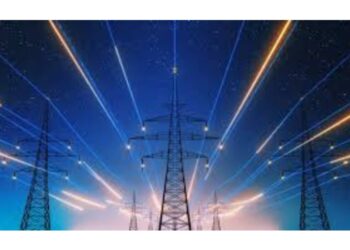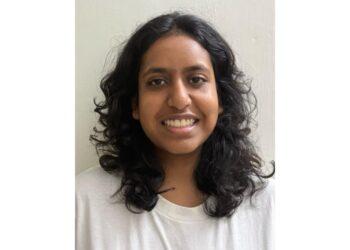A ground-mount project is a solar system installed on land rather than a rooftop, such as a concrete floor or a metal sheet. It comprises an array of photovoltaic modules supported by a module mounting structure (MMS). The panels convert sunlight into direct current (DC), the current is transferred to the inverter through wiring, and the inverter converts DC to AC (alternating current), which is the type of current usable by households.
The largest ground-mount project in India is also the third-largest in the world and is located in Rajasthan with a capacity of 2.5 GW.
Installation Process
So what is the installation process of a ground-mount project? The plant is situated in an area with maximum solar incidence and minimal shading. A TS (total station) instrument is used for surveying and construction. TS marking is done for correct alignment and quality maintenance. After which a DTH (down the hole) piling machine is used to dig holes.
Holes are dug in the ground, and helical pipes are drilled in to form the structural foundation of the system. The depth and size of the hole depend on the soil conditions, and wind intensity of the location and the history of natural disasters like cyclones of the last 10 to 15 years.
The panels are installed on racking- metal racks, namely vertical poles, cross beams, and panel rails. Panels are tilted at an optimal angle for maximum absorption of sunlight, the angle being subjective to the location gradation of land. Solar panels are then fixed on the structure using nuts and bolts, which are usually SS (stainless steel) and GI (galvanised iron) and not MS (mild steel).
The array is connected using wiring housed in DWC (double wall corrugated) pipes. The radiation and wind sensors in the solar system are connected to the SCADA system. There is also scope for installing tracker devices, which change the orientation of panels and are used for maximum radiation absorption.
Ground-mount projects can also be arranged to look aesthetically pleasing; for example, the Walt Disney Park in the USA, sprawling over 270 acres, is a 50 MW solar plant- a step towards environmental stewardship.
Ground mount vs. rooftop solar
The cost of generation per unit is much less in a ground-mount project than in a rooftop setup. Maintenance is much easier in a ground-mount project. In smaller-size rooftop projects, the manpower requirement per kW for the installation process is significantly lesser.
However, land-mount projects are not found in cities due to a lack of space. They are built in remote locations, and the generated power is transferred to the utility grid, and the energy is traded in the open market. These are called open-access projects. Instead of relying on local DISCOMs’ power supply, buyers and sellers can operate in a free, open market. Such a setup results in fair pricing in power procurement and eventually leads to industrial growth on a macro level. To avoid losses, DISCOMs put a CSS (cross-subsidy charges) of Rs. 1 to 2 per kWh in an open-access setup on power purchasers.
Ground-mount projects are usually executed by signing a PPA (power purchase agreement) under which the project is owned by the solar developer and the client purchases electricity at a certain pre-decided rate.
Ground-mount projects make usage of barren and unused lands possible, moreover, such systems are resilient to harsh climates. Given the cost benefits and the energy generation feasible on a larger scale, we are witnessing an avalanche of such renewable projects lined up.













